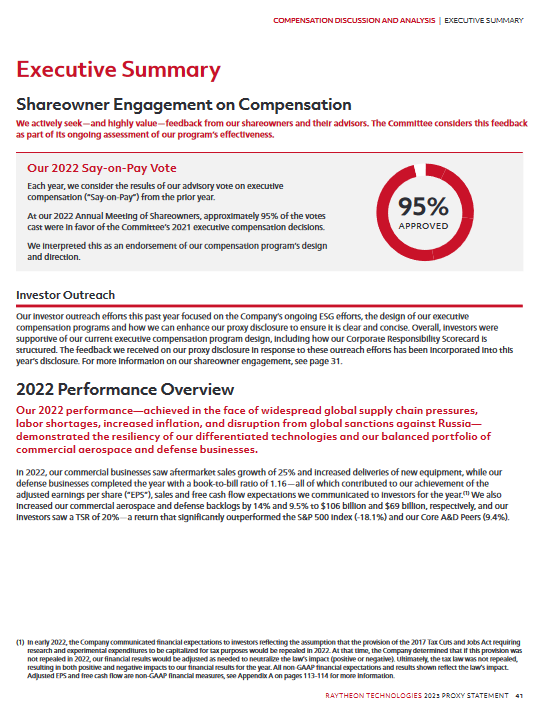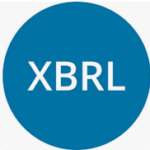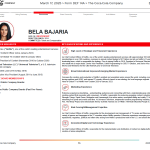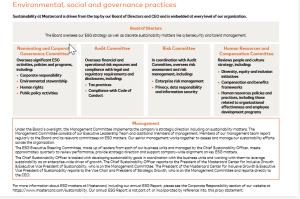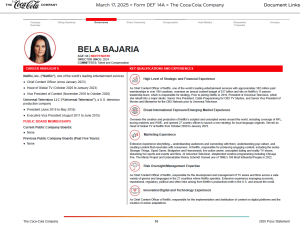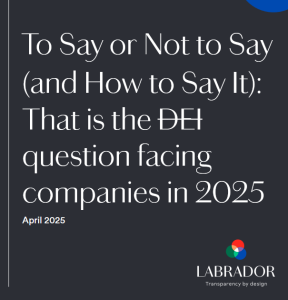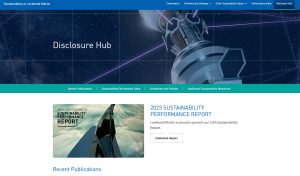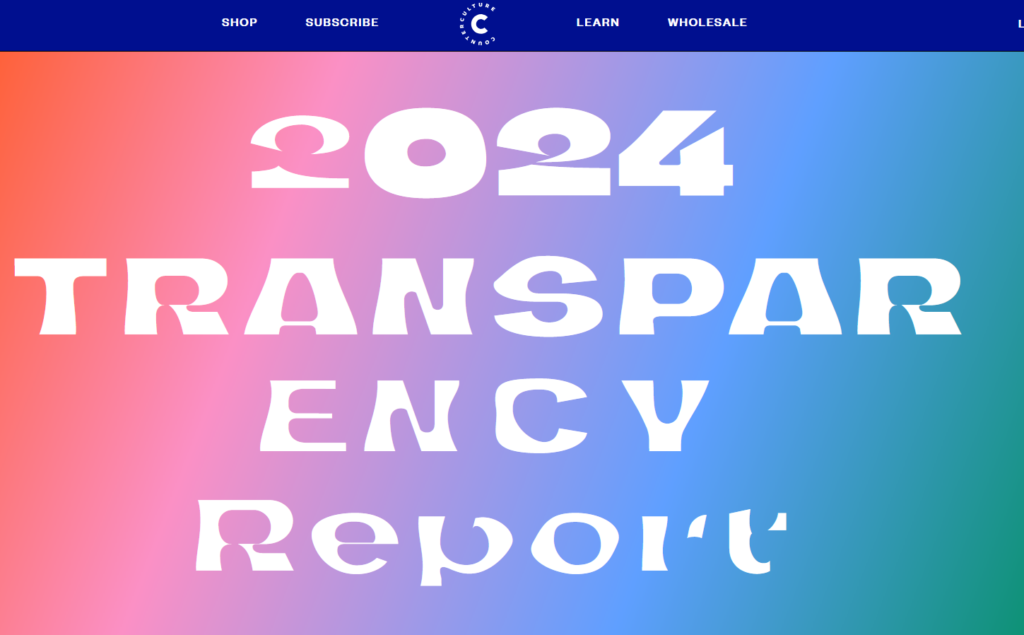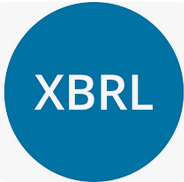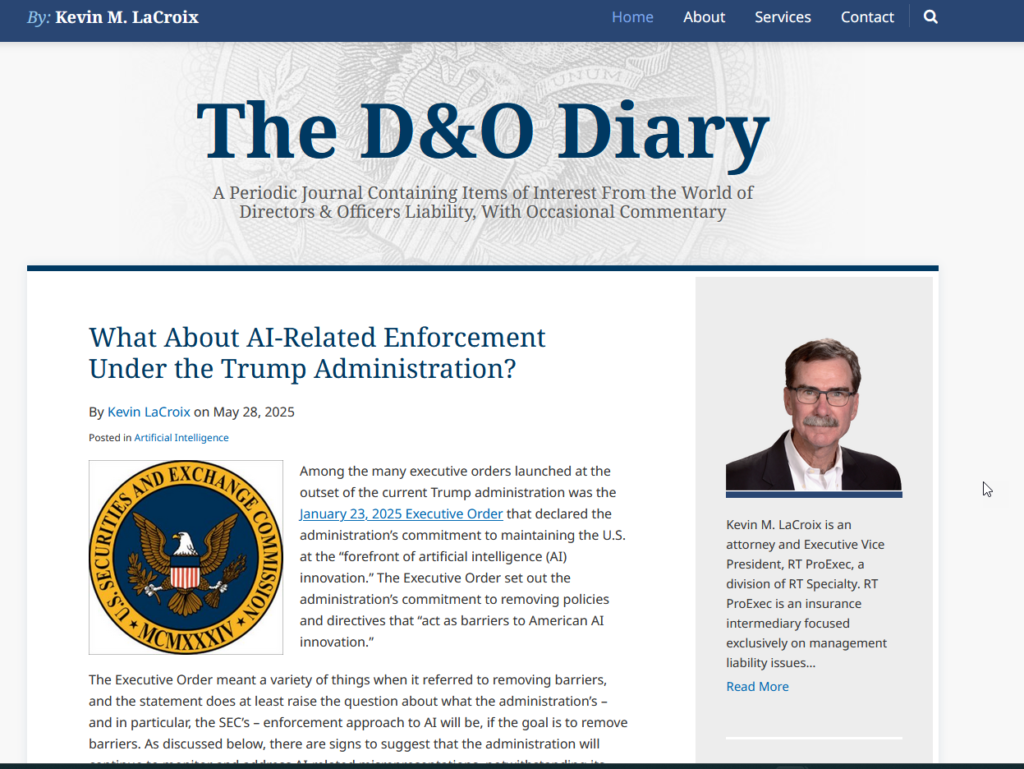Since the SEC last overhauled its executive pay disclosure requirements in 2006, there’s been a slow and steady change in the ways that compensation matters have been disclosed in the proxy. One of those changes is the need for a compensation summary since the pay section of the proxy has grown to be quite long. CD&A is also one section of the proxy that doesn’t have as much standardization across companies as other sections. It’s a matter of accessibility for the reader.
A good summary understands how a reader approaches the compensation section. It provides a baseline for the reader so that when greater detail is provided in the lengthy compensation disclosure, the reader has a good handle on the basics of your comp program. There is context.
The compensation summary typically sits right before the CD&A and is often called a “CD&A Executive Summary.” It’s so much easier to read the dense CD&A when the reader is briefed on key aspects of the story. The reader can then focus on understanding the compensation committee’s decision-making process. This is the purpose of CD&A.
Transparency Criteria #58-64 cover the topics to be addressed in the CD&A summary. I’ll address these with more specificity in subsequent blog posts.
A good compensation summary has three essential parts (or five, if you count sub-parts):
- An introduction with table of contents and identification of the NEOs in a table or visual format
- An overview of the compensation decisions for the year, including:
– How much was actually paid
– Changes to the program - A description of last year’s say-on-pay results and any actions taken in response
An overview of the elements of a compensation program, as well as compensation policies and practices, are also important to provide to the reader before diving into CD&A; however, consideration should be given as to whether this information is best provided in the proxy summary of the CD&A summary. Criteria relating to these disclosures will be covered in subsequent blogs.
Note that “Performance Highlights” isn’t something that’s deemed necessary for the compensation summary. As I blogged about before, that type of business overview probably is a better fit for the proxy summary at the front of the document. The reader is in a better position to understand the entire proxy getting that information up front. Some companies do include a “Performance Highlights” both in the proxy summary and the compensation summary, but to avoid repetition companies can use the performance discussion in CD&A to focus on details that impacted performance-based pay.
Table of contents and identification of the NEOs in a table or visual format
Transparency Criteria #58 for the proxy states:
The CD&A starts with a dedicated table of contents or similar overview of key topics and identifies the NEOs in a table or other visual format.
The function of a table of contents is pretty obvious. It allows a reader to jump to what they want to read. Almost all companies list their NEOs in a table or visual format and avoid a narrative paragraph that makes it harder for a reader to know who the NEOs are at a glance.
Overview of the compensation decisions for the year, including how much was actually paid
Transparency Criteria #62 for the proxy states:
The CD&A summary includes an overview of incentive program achievement and payouts.
Transparency Criteria #61 for the proxy states:
The CD&A summary explains changes to the program for the reporting year or states that there are no changes from the prior year.
The overview of the compensation decisions for the year allows the reader to understand the current focus of the compensation committee. What does the compensation committee think is most important right now? It could be the latest changes to the compensation program. It could be the arrival of a new CEO or NEO. It could be a decision to pay a special award – or a decision to not make a discretionary payout. It may well be that no changes were necessary – and if that’s the case, that should be disclosed.
The overview should cover how much compensation was actually paid over the past year, including at a minimum a sense how incentive programs paid out. Sometimes, this is in the form of a “NEO Scorecard” or something to that effect.
Description of last year’s say-on-pay results and any actions taken in response
Transparency Criteria #59 for the proxy states:
The proxy summary or CD&A summary includes prior year say-on-pay results.
A description of last year’s say-on-pay results should include a discussion of any changes to the program or other actions taken in response. This helps give the reader a sense of how well a compensation committee is reacting to say-on-pay votes.
Check out the 2023 Raytheon proxy (page 41) for a good example of a compensation summary:

